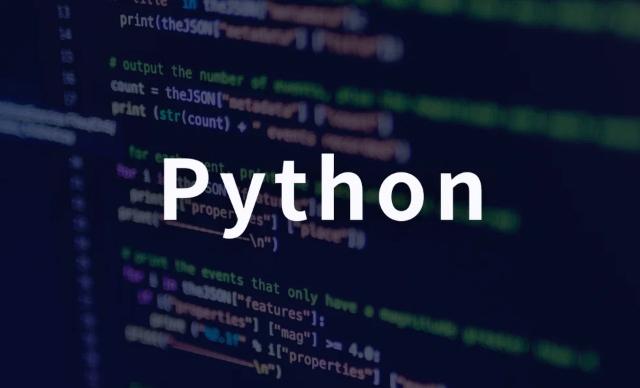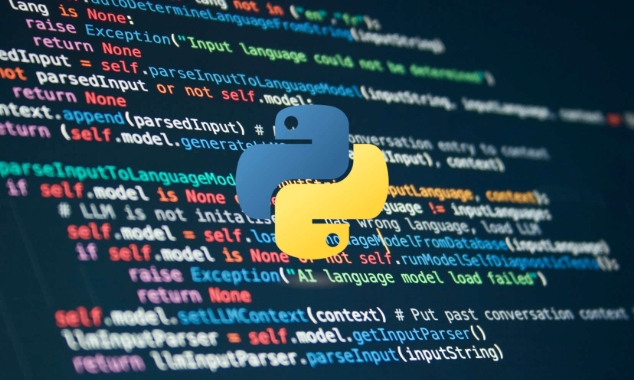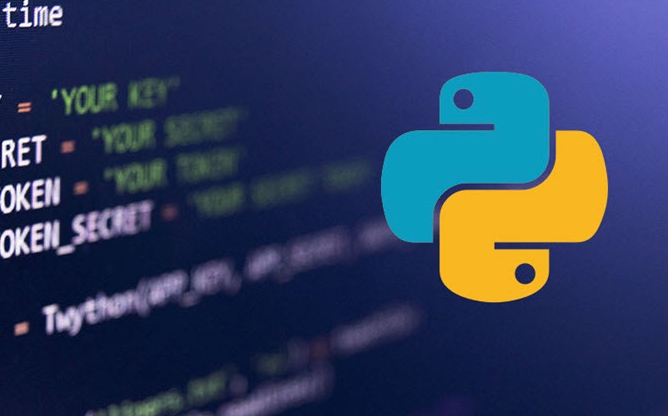The key to developing machine learning APIs is to encapsulate the trained models into services. Using the Flask or FastAPI framework, 1. Prepare the model and load it once to improve response speed; 2. Design a RESTful-style interface, interact with JSON format and return clear error messages; 3. Select the appropriate server and concurrency scheme based on traffic during deployment; 4. Add authentication, frequency control and version management to ensure security and maintainability. The entire process needs to pay attention to the details of model loading, interface design, deployment performance and security.

Developing a machine learning API is actually not mysterious. The core is to encapsulate the trained model into a service so that others can call it through HTTP requests. Python's Flask and FastAPI are two very commonly used frameworks. The former is simple and easy to use, while the latter has better performance and comes with asynchronous support and OpenAPI documentation. Which one you choose depends on your project requirements and performance requirements.

Let’s start from several common scenarios and talk about how to build your own ML API service step by step.
How to prepare a model and load it into the API
Before writing an API, you have to have a trained model first. It can be a scikit-learn, XGBoost, TensorFlow, or PyTorch model, and the save format is usually .pkl or .pt file.

The key point is: the model should be loaded quickly and only loaded once . Do not reload the model every time you request, as it will severely slow down the response speed.
For example, in Flask you can handle it like this:

from flask import Flask, request
import joblib
app = Flask(__name__)
model = joblib.load('model.pkl')
@app.route('/predict', methods=['POST'])
def predict():
data = request.json['data']
prediction = model.predict(data)
return {'prediction': prediction.tolist()}FastAPI is similar, except that the interface is simpler and can automatically parse the JSON type of the request body.
How to design the API interface structure is more reasonable
A good API must be clear and easy to use. It is recommended to follow the following principles:
- Use standard RESTful styles, such as
/predictfor POST requests. - Try to use JSON format for input and output to facilitate front-end and back-end interaction.
- Returns a clear status code (such as 400 means parameter error) and error information when an error occurs.
For example, FastAPI can define the input format like this:
from fastapi import FastAPI
from pydantic import BaseModel
import joblib
app = FastAPI()
model = joblib.load('model.pkl')
class PredictRequest(BaseModel):
features: list[float]
@app.post('/predict')
def predict(req: PredictRequest):
result = model.predict([req.features])
return {'result': result[0]}The advantage of this is that the interface document is automatically generated and it is easier to debug.
How to deploy and improve performance
There is no problem with running locally, but concurrency and performance issues should be considered when online.
Flask is single threaded by default, suitable for small traffic or test environments. In production environments, it is recommended to use Gunicorn Nginx or use WSGI servers such as Waitress.
FastAPI itself is based on ASGI and naturally supports asynchronous requests. It can easily cope with high concurrency with Uvicorn or Hypercorn launchers.
A few suggestions:
- Start a service using multi-process or multi-threaded
- If the model inference takes a long time, consider adding cache or queue mechanism
- Use load balancing (such as Nginx) to distribute requests
- Consider containerized deployment (Docker) for easy management and migration
Security and version management that need attention
Don't forget about security and version control. for example:
- Add authentication to the interface (JWT or API Key)
- Control the frequency of requests to prevent blasting
- Different versions of models are distinguished by different routes, such as
/v1/predict
These details look inconspicuous, but are very critical in actual deployment.
Basically that's it. The whole process is not complicated, but there are many details that are easy to ignore. As long as you clarify the links of model loading, interface design, and deployment methods, you can quickly build an available ML API.
The above is the detailed content of Developing Machine Learning APIs with Python Flask/FastAPI. For more information, please follow other related articles on the PHP Chinese website!

Hot AI Tools

Undress AI Tool
Undress images for free

Undresser.AI Undress
AI-powered app for creating realistic nude photos

AI Clothes Remover
Online AI tool for removing clothes from photos.

Clothoff.io
AI clothes remover

Video Face Swap
Swap faces in any video effortlessly with our completely free AI face swap tool!

Hot Article

Hot Tools

Notepad++7.3.1
Easy-to-use and free code editor

SublimeText3 Chinese version
Chinese version, very easy to use

Zend Studio 13.0.1
Powerful PHP integrated development environment

Dreamweaver CS6
Visual web development tools

SublimeText3 Mac version
God-level code editing software (SublimeText3)

Hot Topics
 Polymorphism in python classes
Jul 05, 2025 am 02:58 AM
Polymorphism in python classes
Jul 05, 2025 am 02:58 AM
Polymorphism is a core concept in Python object-oriented programming, referring to "one interface, multiple implementations", allowing for unified processing of different types of objects. 1. Polymorphism is implemented through method rewriting. Subclasses can redefine parent class methods. For example, the spoke() method of Animal class has different implementations in Dog and Cat subclasses. 2. The practical uses of polymorphism include simplifying the code structure and enhancing scalability, such as calling the draw() method uniformly in the graphical drawing program, or handling the common behavior of different characters in game development. 3. Python implementation polymorphism needs to satisfy: the parent class defines a method, and the child class overrides the method, but does not require inheritance of the same parent class. As long as the object implements the same method, this is called the "duck type". 4. Things to note include the maintenance
 Python Function Arguments and Parameters
Jul 04, 2025 am 03:26 AM
Python Function Arguments and Parameters
Jul 04, 2025 am 03:26 AM
Parameters are placeholders when defining a function, while arguments are specific values ??passed in when calling. 1. Position parameters need to be passed in order, and incorrect order will lead to errors in the result; 2. Keyword parameters are specified by parameter names, which can change the order and improve readability; 3. Default parameter values ??are assigned when defined to avoid duplicate code, but variable objects should be avoided as default values; 4. args and *kwargs can handle uncertain number of parameters and are suitable for general interfaces or decorators, but should be used with caution to maintain readability.
 Explain Python generators and iterators.
Jul 05, 2025 am 02:55 AM
Explain Python generators and iterators.
Jul 05, 2025 am 02:55 AM
Iterators are objects that implement __iter__() and __next__() methods. The generator is a simplified version of iterators, which automatically implement these methods through the yield keyword. 1. The iterator returns an element every time he calls next() and throws a StopIteration exception when there are no more elements. 2. The generator uses function definition to generate data on demand, saving memory and supporting infinite sequences. 3. Use iterators when processing existing sets, use a generator when dynamically generating big data or lazy evaluation, such as loading line by line when reading large files. Note: Iterable objects such as lists are not iterators. They need to be recreated after the iterator reaches its end, and the generator can only traverse it once.
 Python `@classmethod` decorator explained
Jul 04, 2025 am 03:26 AM
Python `@classmethod` decorator explained
Jul 04, 2025 am 03:26 AM
A class method is a method defined in Python through the @classmethod decorator. Its first parameter is the class itself (cls), which is used to access or modify the class state. It can be called through a class or instance, which affects the entire class rather than a specific instance; for example, in the Person class, the show_count() method counts the number of objects created; when defining a class method, you need to use the @classmethod decorator and name the first parameter cls, such as the change_var(new_value) method to modify class variables; the class method is different from the instance method (self parameter) and static method (no automatic parameters), and is suitable for factory methods, alternative constructors, and management of class variables. Common uses include:
 How to handle API authentication in Python
Jul 13, 2025 am 02:22 AM
How to handle API authentication in Python
Jul 13, 2025 am 02:22 AM
The key to dealing with API authentication is to understand and use the authentication method correctly. 1. APIKey is the simplest authentication method, usually placed in the request header or URL parameters; 2. BasicAuth uses username and password for Base64 encoding transmission, which is suitable for internal systems; 3. OAuth2 needs to obtain the token first through client_id and client_secret, and then bring the BearerToken in the request header; 4. In order to deal with the token expiration, the token management class can be encapsulated and automatically refreshed the token; in short, selecting the appropriate method according to the document and safely storing the key information is the key.
 What are Python magic methods or dunder methods?
Jul 04, 2025 am 03:20 AM
What are Python magic methods or dunder methods?
Jul 04, 2025 am 03:20 AM
Python's magicmethods (or dunder methods) are special methods used to define the behavior of objects, which start and end with a double underscore. 1. They enable objects to respond to built-in operations, such as addition, comparison, string representation, etc.; 2. Common use cases include object initialization and representation (__init__, __repr__, __str__), arithmetic operations (__add__, __sub__, __mul__) and comparison operations (__eq__, ___lt__); 3. When using it, make sure that their behavior meets expectations. For example, __repr__ should return expressions of refactorable objects, and arithmetic methods should return new instances; 4. Overuse or confusing things should be avoided.
 How does Python memory management work?
Jul 04, 2025 am 03:26 AM
How does Python memory management work?
Jul 04, 2025 am 03:26 AM
Pythonmanagesmemoryautomaticallyusingreferencecountingandagarbagecollector.Referencecountingtrackshowmanyvariablesrefertoanobject,andwhenthecountreacheszero,thememoryisfreed.However,itcannothandlecircularreferences,wheretwoobjectsrefertoeachotherbuta
 Python `@property` decorator
Jul 04, 2025 am 03:28 AM
Python `@property` decorator
Jul 04, 2025 am 03:28 AM
@property is a decorator in Python used to masquerade methods as properties, allowing logical judgments or dynamic calculation of values ??when accessing properties. 1. It defines the getter method through the @property decorator, so that the outside calls the method like accessing attributes; 2. It can control the assignment behavior with .setter, such as the validity of the check value, if the .setter is not defined, it is read-only attribute; 3. It is suitable for scenes such as property assignment verification, dynamic generation of attribute values, and hiding internal implementation details; 4. When using it, please note that the attribute name is different from the private variable name to avoid dead loops, and is suitable for lightweight operations; 5. In the example, the Circle class restricts radius non-negative, and the Person class dynamically generates full_name attribute






